Closing Techniques in Sales
Mastering the art of closing sales is crucial for any business, and Dynamo Selling is here to help you refine your approach and achieve success. Whether you’re a seasoned professional or new to the field, understanding various closing techniques can significantly impact your results. This article explores effective strategies that can elevate your sales game.
Key Takeaways
- Use the Assumptive Close to maintain conversation momentum.
- Create urgency to encourage swift decisions.
- Offer limited options to streamline choices.
- Engage with questions to align with customer needs.
Understanding the Importance of Closing Techniques
Closing a sale is more than just sealing the deal; it’s about ensuring that the customer feels confident in their decision. Effective closing techniques, often discussed at a sales conference, help build trust and rapport, making the customer more likely to return and refer others. Here are some tried-and-true methods:
- The Assumptive Close: This technique is based on the principle of anticipation. Here, you assume the sale is a given and proceed accordingly. Instead of asking if the customer wants to buy, you ask when they would like the product delivered or which payment method they prefer. This technique relies on the momentum of the conversation and subtly guides the customer towards a positive decision.
- The Urgency Close: Fostering a sense of urgency can lead to faster decision-making. Highlight limited-time offers or the risk of missing out on exclusive deals. For instance, stating that a discount is available for a short period or that stock is limited can motivate customers to act swiftly.
- The Option Close: People like choices, but too many can be overwhelming. Presenting two or three options can make the decision process easier. For example, asking whether the customer prefers product A or product B rather than an open-ended “Which product do you want?” can streamline the process and lead to a quicker close.
- The Question Close: Engaging the customer with questions about their needs and preferences can lead to a natural close. Questions such as “How does this solution meet your objectives?” or “Which feature are you most looking forward to?” help keep the customer engaged and centred on the advantages of the purchase.
- The Direct Close: Sometimes, the most straightforward approach is the best. The Direct Close involves simply asking for the sale. A clear, confident question like “Shall we proceed with this purchase?” can be very effective, especially if the customer has shown clear interest.
- The Summary Close: The Summary Close involves recapping the benefits and features of the product or service. By summarising what the customer stands to gain, you reinforce the value of their decision. This technique works well when dealing with complex products or services, as it helps clarify any doubts the customer might have.
- The Sharp Angle Close: This technique is used when the customer asks for a concession or an additional benefit. Instead of outright agreeing, you can respond with, “If I can do that for you, would you be ready to sign today?” This not only addresses their request but also nudges them towards making a decision.
- The Take Away Close: Sometimes, suggesting that the customer might miss out on the deal can prompt a quicker decision. The Take Away Close involves hinting that the offer or product might not be available later, creating a fear of missing out (FOMO).
- The Trial Close: This approach includes posing inquiries that assess the customer’s willingness to purchase without explicitly soliciting a sale. Questions such as, “What are your thoughts on this solution so far?” or “Do you see how this can benefit your business?” help identify any remaining objections and prepare the customer for the final decision.
- The Columbo Close: Named after the famous TV detective, the Columbo Close involves asking a seemingly casual question just as you’re about to leave. This can often catch the customer off guard and prompt them to make a decision.
Applying Closing Techniques Effectively
To effectively use these techniques, it’s important to understand the context and the customer’s needs. Consider these helpful tips:
- Listen Actively: Pay attention to the customer’s concerns and needs. Tailor your closing technique to address these specifically.
- Build Rapport: Establish a connection with the customer. People are more likely to buy from those they trust.
- Be Confident: Confidence is key in closing a sale. Have faith in the product or service you offer, as it will shine through in your interactions.
- Stay Positive: Maintain a positive attitude throughout the conversation. Positivity can be contagious and can influence the customer’s decision.
- Adapt Flexibly: Be ready to switch techniques if one isn’t working. Flexibility can help you find the right approach for each customer.
Conclusion
Implementing these closing techniques can greatly enhance your sales performance. At Dynamo Selling, we specialise in equipping you with the tools and strategies needed for sales success. Ready to elevate your sales game? Get in touch with Dynamo Selling today to start transforming your approach and achieving your business goals.
FAQs
What is the Assumptive Close?
The Assumptive Close involves proceeding as if the customer has already decided to buy, which helps maintain momentum and subtly guides them towards a positive decision.
How does the Urgency Close work?
The Urgency Close creates a sense of urgency by highlighting limited-time offers or the risk of missing out, prompting quicker decision-making from customers.
Why is the Option Close effective?
The Option Close simplifies the decision process by presenting a limited number of choices, making it easier for customers to decide.
What is the benefit of the Question Close?
The Question Close keeps customers engaged by asking about their needs and preferences, aligning the product’s benefits with their goals.
When should I use the Direct Close?
The Direct Close is best when the customer has shown clear interest, allowing you to confidently ask for the sale directly.
How can Dynamo Selling help improve my closing techniques?
Dynamo Selling offers comprehensive training and workshops designed to enhance your sales skills and provide effective closing strategies tailored to your business needs.



